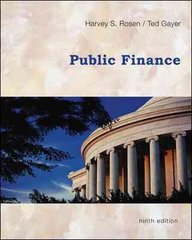Dustin Hansen is in his early 30s and is thinking about opening an IRA. He can't decide whether to open a traditional/deductible IRA or a Roth IRA, so he turns to you for help a. To support your explanation, you decide to run some comparative numbers on the two types of accounts; for starters, use a 30-year period to show Dustin what contributions of $6,000 (before taxes, if applicable) per year will amount to (after 30 years) given that he can earn, say, 10 percent on his money. Assume that the money are invested at the end of each year and that Dustin is in the 22 percent tax bracket (and will remain there for the next 30 years) Round your answers to the nearest dollar Traditional IRA Roth IRA Will the type of account he opena Wave any impact on this amount? Yes h the box below will not be graded, but may be reviewed and considered by your instructor b. Assuming that Dustin is in the 22 percent tax bracket (and will remain there for the next 30 years), determine the annual and total (over 30 years) tax savings he'll enjoy from the $6,000-a-year contributions to his TRA: contrast the annual and total) tax savings he'd generate from a traditional TRA with those from a Roth IRA. If an answer is zero, enter "o". Round your answers to the nearest dollar Traditional IRA annual tax savings: 3 Roth IRA annual tax savings! $ Traditional IRA total tax savings: $ Roth IRA total tax savings: $ c. Now, fast-forward 30 years, Given the size of Dustin's account in 30 years (as computed in part a), assume that he takes it all out in one lump som. If he's now in the 32 percent tax bracket, how much will he have, after taxes, with a traditional IRA as compared with a Roth IRA? Round your answers to the nearest dollar Traditional IRA: $ Roth IRA: How do the taxes computed here compare with those computed in part b? Comment on your findings. Dustin Hansen is in his early 30s and is thinking about opening an IRA. He can't decide whether to open a traditional/deductible IRA or a Roth IRA, so he turns to you for help a. To support your explanation, you decide to run some comparative numbers on the two types of accounts; for starters, use a 30-year period to show Dustin what contributions of $6,000 (before taxes, if applicable) per year will amount to (after 30 years) given that he can earn, say, 10 percent on his money. Assume that the money are invested at the end of each year and that Dustin is in the 22 percent tax bracket (and will remain there for the next 30 years) Round your answers to the nearest dollar Traditional IRA Roth IRA Will the type of account he opena Wave any impact on this amount? Yes h the box below will not be graded, but may be reviewed and considered by your instructor b. Assuming that Dustin is in the 22 percent tax bracket (and will remain there for the next 30 years), determine the annual and total (over 30 years) tax savings he'll enjoy from the $6,000-a-year contributions to his TRA: contrast the annual and total) tax savings he'd generate from a traditional TRA with those from a Roth IRA. If an answer is zero, enter "o". Round your answers to the nearest dollar Traditional IRA annual tax savings: 3 Roth IRA annual tax savings! $ Traditional IRA total tax savings: $ Roth IRA total tax savings: $ c. Now, fast-forward 30 years, Given the size of Dustin's account in 30 years (as computed in part a), assume that he takes it all out in one lump som. If he's now in the 32 percent tax bracket, how much will he have, after taxes, with a traditional IRA as compared with a Roth IRA? Round your answers to the nearest dollar Traditional IRA: $ Roth IRA: How do the taxes computed here compare with those computed in part b? Comment on your findings








